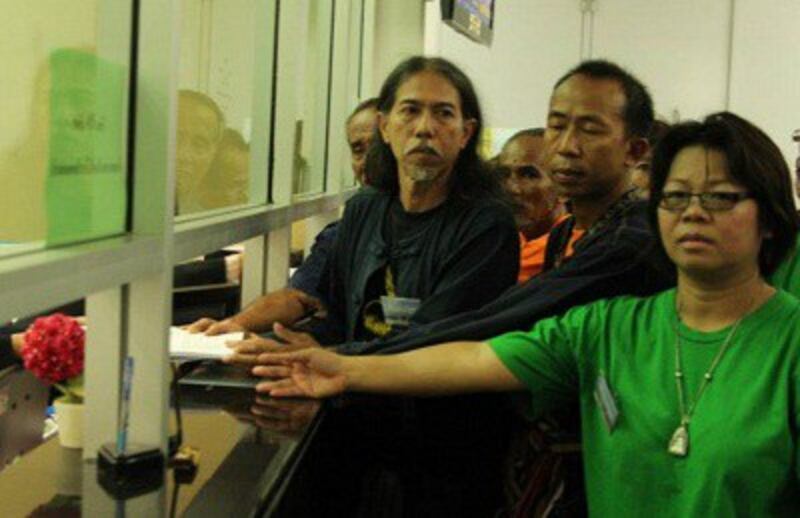Conservationists and residents of communities along the Mekong River asked a court in Bangkok Tuesday to stop a Thai government power company from buying electricity generated by the proposed Xayaburi dam in neighboring Laos.
They said the Thai government should not have allowed the Electricity Generating Authority of Thailand (EGAT) to sign an agreement with Laos’s Xayaburi Power Co. for purchasing electricity from the 1,260-megawatt hydropower dam before assessing the environmental impact of the project.
Over 30 villagers from communities in Thailand’s eight provinces along the Mekong, Southeast Asia’s key artery, filed the suit at the Administrative Court in Bangkok against EGAT, the Thai Cabinet, and three other state entities.
Under the October agreement, EGAT will buy 95 percent of the electricity generated by the dam once it is completed.
Thai activist Niwat Roykaew said legal action was the only recourse left for for opponents of the dam after they had voiced their concerns about the project to the Thai company Ch. Karnchang that is building the dam, the banks that are financing it, and both the Lao and Thai governments.
“We made appeals to all parties concerned—the four Thai banks, Ch. Karnchang Co., the Lao Embassy in Bangkok—and we submitted a petition to the Thai Prime Minister’s office,” said Niwat, one of the leaders of the Thai People’s Network in Eight Mekong Provinces, a grassroots group behind the suit.
Laos says it has suspended the dam in response to calls to wait for further impact assessments, but it has allowed Ch. Karnchang to begin initial construction on the project.
“We have done everything to make the parties concerned aware of the issues but so far none of the departments or organizations we have appealed to has addressed the issue by suspending the project in order to avoid its impact. For this reason we … are seeking justice from the court,” Niwat said.
He added that the group made the appeal to stop the project on behalf of all people living downstream from the dam in Laos, Vietnam, Cambodia, and Thailand.

Damming the Mekong
The Xayaburi dam would be the first of a dozen proposed dams across the main stem of the Lower Mekong, after five already built on the upper part of the river in China.
The group’s coordinator Ittibhol Khamsouk said people along the river have been affected by the dams already built on the Upper Mekong.
“As far as compensation is concerned, no governmental or organizational entities have lent a helping hand for impacts we have already experienced from the … Chinese dams,” he said.
Environmental groups in Thailand, Cambodia, and Vietnam have staged protests against the Xayaburi dam, saying it is likely to damage the Mekong ecosystem, fisheries, and food security of the people downstream.
The Mekong River Commission (MRC), a four-nation body created to jointly manage development along the river, has expressed reservations over the project, but has no binding jurisdiction on what Laos does about the dam.
One study commissioned by the group recommended a 10-year moratorium on all mainstream Mekong dams due to a need for further research on their potentially catastrophic environmental and socioeconomic impact.
Laos, which hopes to become the “battery” of Southeast Asia by selling hydroelectric power to its neighbors, has over 70 dams planned on its rivers.
State media reported on Tuesday that three hydropower projects—the Nam Ngum 5 power station in Luang Prabang province, the Theun Hinboun project in Borikhamxay, and Xekaman 3 project in Xekong—are nearly completed and expected to start producing power this year.
Reported by RFA’s Lao service. Translated by Viengsay Luangkhot. Written in English by Rachel Vandenbrink.
